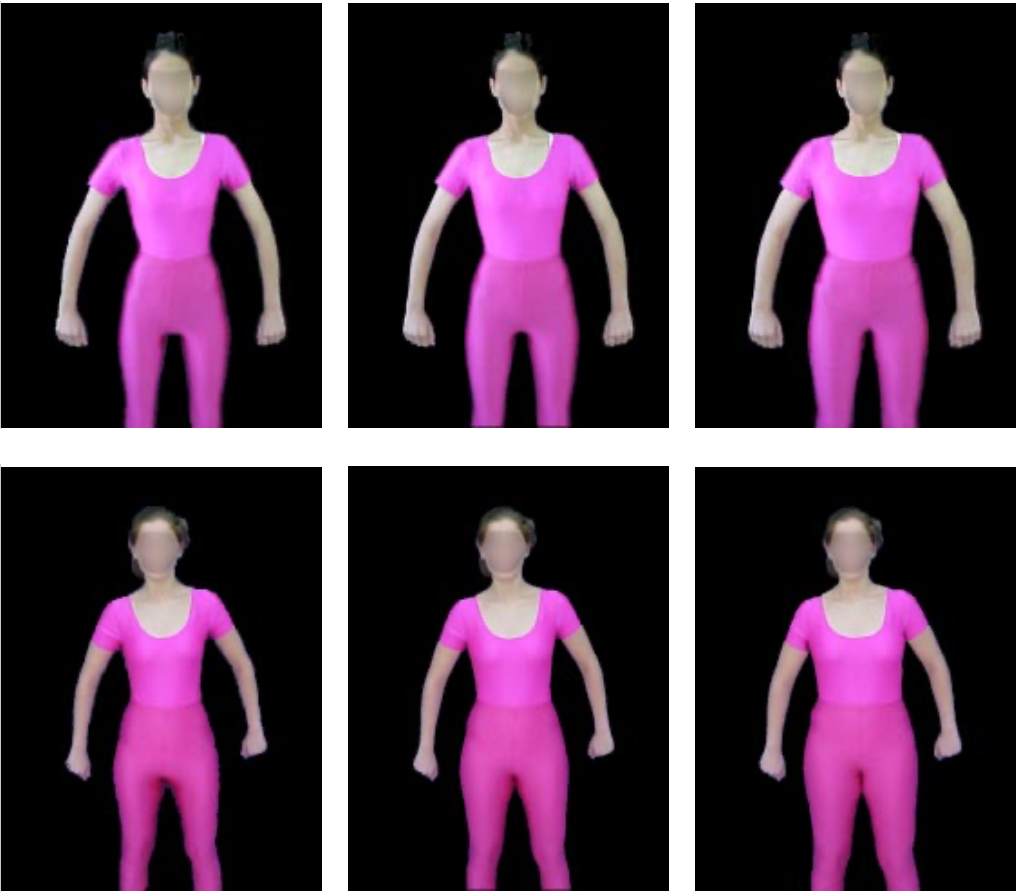Anorexia: Cognitive explanations
Cognitive explanations of anorexia
The cognitive approach argues that cognitive processes play a role in our mental health. Cognitive psychologists argue that negative schema and attention bias may be key factors in the development of eating disorders.
Before completing the module below, please read the section of the textbook called the cognitive approach to anorexia. When reading this section, please make note of the following important concepts:
- Attentional bias
- Body-image distortion hypothesis
- Weight-related schema
Understanding the role of cognition
In the textbook, you will see a study by Fallon & Rozin (1985). In this study, the researchers used cartoon-style images and asked US undergraduates to choose the body shape that was most like their own. In this study, however, the participants did not have anorexia. Modern researchers have used similar tools to better understand the way that people living with anorexia perceive their own weight and body shape.
Please watch the following video and answer the questions below.
Checking for understanding
Please answer the following questions based on the video above.
1. What is the difference between body dysmorphic disorder and anorexia?
Not all people with BDD develop dysfuncational eating behaviours. Anorexia is considered by some psychologists to be a "sub-type" of BDD.
2. Describe the eye-tracking technique used in this study.
Participants are asked to look at faces with the goal of determining the person's current emotional state. Infared light tracks the eye-activity as they scan the face.
3. What is the key difference between people with BDD and health participants in the eye-tracking test?
Healthy participants tend to focus on the eyes, nose and mouth area of the face. This triangle of the face is where we communicate most of our emotional information. People with BDD show more eye activity covering a large range of the face and often not focused on this triangle. This is known as an attentional bias.
4. Which symptom of BDD (and often, anorexia) is linked to the way that these participants look at human faces?
Social anxiety. It is believed that this inability to focus on the important areas of the face means that people with BDD have difficulty reading social cues. As the researcher states, this may be a result of BDD rather than the direct cause of it. The overactivity of the visual cortex may be genetic.
Although this video is about body dysmorphic disorder, a similar test is used when looking at people living with anorexia. Watch the following video. How does this technique compare to the one in the video above?
The technique in this video requires the participant to be much more active in making decisions. This is similar to the study done by Fallon & Rozin (1985), but it is more interactive. The problem is that the task is very difficult, even for those participants who do not have eating disorders. The eye-tracking technique is more "automatic" and is not as open to demand characteristics. In addition, there is a certain level of deception in the eye-tracking technique which is not part of this "body-stretching" technique.
This final video shows that the distortion of body size is the result of information that we process in our environment. How might the findings in this video be linked to the argument that the promotion of thinness in the media has an effect on eating disorders?
The researcher argues that we use the body shapes of others as an "anchor" for determining whether we are over or under-weight. If this is the case, then it could be argued that when people are bombarded with images of people who are much thinner than they are, they will feel that they are overweight. This theory, however, does not explain why some people are more susceptible to this than others.
Cognitive explanations of anorexia
Read through the following presentation. When you have finished, answer the questions based on the presentation and the textbook reading. Write out your answers below before checking the hidden boxes below.
Applying our understanding
Complete each of the following statements, based on your understanding of cognitive theories of the etiology of anorexia nervosa.
1. Maladaptive schema theory argues that we develop dysfunctional ways of thinking as a result of …
Negative childhood experiences. This can be the result of trauma, but it is more commonly the result of neglect or over-controlling parents, lack of peer support, or lack of secure attachment. Parenting styles are linked to maladaptive schema.
2. Bruch said that patients with anorexia show “an absence of concern about emaciation, even when advanced.” This is the basis for which theory?
Body-image distortion theory - which is a misperception about one's own body weight.
3. Fairburn argues that distorted weight-related schema are the result of ...
cultural norming or personal feedback - for example, compliments received as a result of weight loss or being told that she needs to lose weight if she wants to "get the boys."
4. The research method used in Fallon & Rozin’s (1985) study was …
A quasi-experiment - the participants could not be randomly allocated to conditions. The researcher was looking at gender differences with regard to questions about body image.
5. According to the videos we watched and the study by Kim et al, what might be the reason for attentional bias in people with anorexia?
There is most likely a biological origin of this behaviour. The video suggested a genetic origin of the bias, rooted in activity in the visual cortex. The study by Kim argues that there may be a hormonal link, noting that increased levels of oxytocin decreased the attentional bias.
6. Guillaume et al (2016) found that the severity of symptoms in patients with eating disorder was correlated with ….
Adverse childhood experiences.
7. A domain of schema that focuses on the needs of others, rather than self-care is called ...
Other-directedness
8. A domain of schema that focuses on the belief that one has little or no control over life events is called ....
Impaired autonomy
Thinking about research
Please read the following two summaries of research that is linked to the cognitive explanation of anorexia. Then answer and submit the short-answer questions below.
Study 1. Cornelissen et al (2017)
Cornelissen et al (2017) investigated the extent to which patients with anorexia nervosa over-estimate their body size. The researchers took 3D scans of 15 women who had symptoms of anorexia and 15 healthy control women. Then, using a 3D modelling package to build avatars from the scans, they accurately manipulated the images to create a range of avatars reflecting different measures of body mass index [BMI]. The women were asked to choose the avatar that was the most accurate representation of their current body size. The results show that women who are currently receiving treatment for anorexia showed an overestimation of body size. In addition, the higher the woman's BMI, the higher the overestimation. By contrast, the women acting as healthy controls were able to accurately estimate their body size irrespective of their own BMI.
Study 2. McKenzie et al (1993)
McKenzie et al (1993) interviewed women with eating disorders and a control group about their body weight, shape, and ideals, and got them to estimate their own size in relation to other women. They found that when asked to compare themselves with controls who were the same size, women who had been diagnosed with an eating disorder tended to overestimate their own body weight. When asked to indicate their ideal body weight, women with eating disorders chose a significantly lighter weight than the control group. The participants were then given a chocolate bar and a soft drink to consume. Following this, they were asked to re-estimate their body weight. The women with eating disorders judged that their size has increased, while the control group judged that their size had not changed.
1. Choose one of the two studies and comment on its internal validity.
2. Choose one of the two studies and comment on its ecological validity.
3. Choose one of the two studies and comment on its construct validity.
4. Choose one of the two studies and identify the research method that was used. What is one strength and one limitation of that method?
5. Which of the two studies do you think is better evidence of the role of cognitive factors in anorexia? Justify your position.
Continue to Sociocultural explanations of anorexia

 IB Docs (2) Team
IB Docs (2) Team

